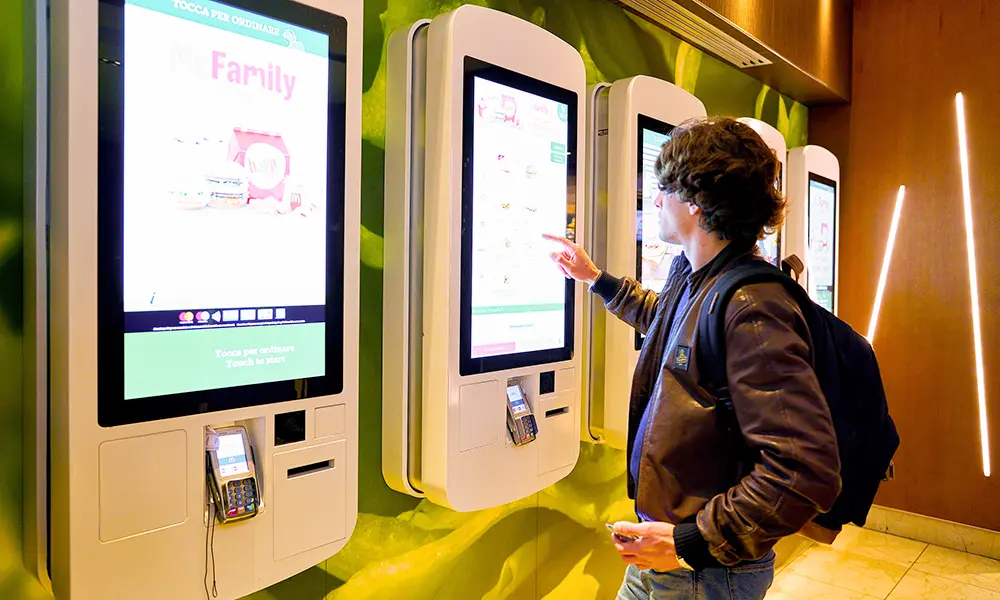Dining out is no longer just about the food; it’s about the entire experience. From the ambience and service to the technology that enhances customer engagement, restaurants are finding innovative ways to stand out in an increasingly competitive industry. One such innovation transforming the sector is the digital menu display.
Modern restaurants are moving away from traditional printed menus and chalkboards toward interactive, visually engaging solutions that bring menus to life. Whether it’s quick-service outlets or fine-dining establishments, adopting a digital menu for restaurants has become more than just a trend; it’s a strategic investment in efficiency, branding, and customer satisfaction.
The Shift Toward Digital Menus
For decades, restaurants relied on static menus that had to be reprinted every time a dish was updated, a price was changed, or a new promotion was launched. This not only added costs but also limited flexibility. In contrast, digital menu displays enable restaurants to update their offerings instantly, ensuring that information is always accurate and visually appealing.
More than just replacing printed menus, digital boards enhance customer engagement with vivid visuals, animations, and even real-time offers. They create an experience that resonates with today’s tech-savvy diners who are used to dynamic digital interactions.
Benefits of Digital Menu Displays
The popularity of digital menu for restaurants stems from the tangible advantages they provide:
- Real-Time Updates
Restaurants can adjust prices, add seasonal dishes, or highlight specials instantly without the hassle of printing new menus.
- Enhanced Visual Appeal
High-resolution images and videos make dishes look more appetising, influencing customer choices and boosting upselling opportunities.
- Cost Efficiency
Although there’s an initial investment, digital menus eliminate the recurring costs of printing, resulting in long-term savings.
- Improved Customer Experience
By simplifying menu navigation and highlighting key items, digital boards reduce decision-making time and improve order accuracy.
- Increased Sales
Strategically placing promotions or combo deals on screens encourages impulse buys and increases the average order value.
Why Digital Menu for Restaurants Is Becoming Essential
The food and beverage industry is one of the most competitive markets. Restaurants must not only serve great food but also deliver an efficient, memorable experience. A digital menu for restaurants serves as an effective tool for branding and communication.
These systems also provide valuable flexibility:
- Displaying different menus during breakfast, lunch, and dinner.
- Highlighting promotions in real time.
- Rotating displays to reduce menu fatigue and increase customer engagement.
This adaptability enables restaurants to align their menus with customer behaviour and maximize revenue.
How Digital Menu Displays Support Branding
Menus are often the first point of interaction between a restaurant and its customers. A digital menu display becomes a powerful branding tool when designed thoughtfully. By incorporating brand colours, logos, and consistent design language, restaurants can create a cohesive visual identity that extends beyond food presentation.
In addition, the ability to integrate storytelling, such as highlighting the origin of ingredients or chef’s specials, strengthens customer connection and builds loyalty.
Integrating Technology for Smarter Dining
Beyond displaying items, modern digital menu for restaurants can be integrated with advanced technology for even greater efficiency. Some innovations include:
- Touchscreen menus that allow customers to place orders directly.
- Integration with POS systems for faster processing.
- Analytics dashboards to track which items are most viewed and purchased.
- Dynamic pricing features that adjust according to demand or the time of day.
These integrations enable restaurants to make informed decisions, reduce waste, and improve overall service quality.
The Environmental Impact
Sustainability is increasingly important for today’s diners. Traditional menus contribute to paper waste, while digital alternatives significantly reduce environmental impact. By adopting a digital menu display, restaurants can align with eco-friendly practices and appeal to environmentally conscious customers.
Challenges and Solutions
Like any technology, digital menu for restaurants comes with challenges:
- Initial Investment: Although the upfront cost may seem high, the long-term benefits, including sales growth, outweigh the expense.
- Content Management: Updating menus requires creative and technical resources. This can be addressed with user-friendly content management systems.
- Power Dependency: Restaurants must ensure they have backup solutions in place during power outages to avoid interruptions.
With thoughtful planning, these challenges can be effectively managed, making digital menus a reliable long-term investment.
Case for Quick-Service Restaurants
For quick-service restaurants (QSRs), a digital menu display is almost indispensable. Fast-moving lines demand speed and clarity, and digital menus reduce confusion while highlighting bestsellers. With animations, countdowns for limited time offers, and eye-catching visuals, QSRs can create urgency that boosts sales.
Adapting for Fine Dining
Even fine-dining restaurants are recognising the potential of digital menus. Here, the focus is less on flashy promotions and more on elegant presentation. A digital menu for restaurants in upscale spaces often blends subtle animations, minimalist design, and detailed dish descriptions to reflect sophistication.
Future of Digital Menus in Restaurants
Looking ahead, digital menu displays are expected to become even more interactive and personalised. Emerging trends include:
- AI-driven recommendations based on customer preferences.
- Augmented reality menus that allow customers to visualise dishes before ordering.
- Voice-enabled menus for enhanced accessibility.
Such innovations will ensure restaurants remain aligned with the digital lifestyle of future diners.
The restaurant industry is undergoing a digital renaissance, and at its center is the digital menu display. More than just an upgrade from traditional menus, it is a tool that enhances branding, improves the customer experience, reduces costs, and drives higher sales. With the integration of LED digital display boards, restaurants can present dynamic visuals, real-time updates, and promotions that captivate customers effortlessly.
Adopting a digital menu for restaurants is no longer about staying trendy; it’s about staying relevant. As competition intensifies and customer expectations evolve, restaurants that embrace digital transformation will be the ones to lead the way. For diners, it translates into more engaging, efficient, and memorable experiences one digital menu at a time.








